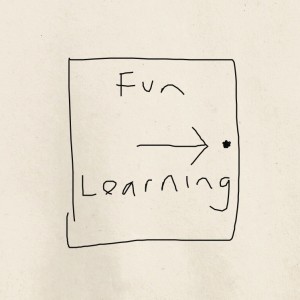This email is rather typical of what I receive each week.
Thank you for all your work helping us golfers to improve, in your article about grip from the biomechanical research you say: Grip the club across the base of your trailing hand. could you please explain exactly what this means, where in you right hand (for a righty im assuming) do you place the grip ?
Now this seems like a pretty fair question but in my experience it’s one that’s stuck in the traditional mindset. There’s really no proper way to answer it – you end up with some complicated diatribe that confuses matters more.
Here’s another email from last week:
With regards to ball striking I am striking the ball with a vertical shaft rather than with some forward lean. The ball is shooting up in the air instead of penetrating forward. It may well be a hangover from the swing that I learnt in the sixties and taught in the seventies. Any thoughts?
Again, this seems like a logical question but the thinking is still stuck in classical land. If you’ve been playing golf for more than a year or so, you’ll know that classical instruction is fraught with issues – most notably, it’s not geared towards long-lasting improvement.
What’s really needed is a mindset shift. Instead of waiting for the answer to be presented, you need to put some trust in yourself and go exploring – to discover the answer for yourself.
For this to happen you need to push your boundaries – to hit the edge of your comfort zone. As I’ve mentioned lots of times before, this isn’t always easy and leads to some discomfort. Let me use some images to explain this. (thanks to Scott Barrow for sharing these with me some time ago).
This poorly drawn box below represents your full comfort zone. You’re free to venture anywhere inside it without doing too much damage. If you step outside it, you may overload your system, but you’d still unlikely cause any pain. After all, it’s only golf we’re playing. Skydivers may need to be more careful.

A funny box representing your golf comfort zone
We’re all fairly conditioned to follow the status quo. We’re not really encouraged to stand up and beat our own drum – this is beaten into us during school, then University and then later on in the work environment. Asking questions, challenging the system and bucking trends is certainly frowned upon. This has become so normal that most of us wouldn’t recognise it.
For this reason most of us play golf with our comfort zone right in the middle. It’s safe. You’re doing what everyone expects of you and you’re not causing a stir. You’re conforming and it probably feels pretty good.

The problem with this is you’re not in the right place for learning to take place. You’re in first gear and unlikely to learn anything worthwhile. Yes, you won’t cause any damage, be laughed at or upset the apple cart, but you’re not going to go anywhere either. You’re stuck and most likely waiting for something good to happen.
If nothing else, this website is encouraging you to step it up. To break free from the shackles and let your learning system shine. Traditional thinking is holding you back – you haven’t reached anywhere close to your success potential and it’s because you’re not pushing your boundaries.

Pushing to the edge of your comfort zone is fun
Hitting the edge of your comfort zone will feel weird. You may even feel like a naughty schoolboy smoking behind the shelter shed, but it’s what’s needed to have a breakthrough in your game. You’ve got to hit the edges and now is the best time.
When you step it up you’ll learn something new – of this I’m sure. And because you’re breaking some old-fashioned and outdated rules you’ll have more fun. From here anything is possible. And don’t analyse and worry where on the edge you’re going – just go somewhere – over-thinking and worrying about doing it right is still classical thinking. It’s a sign that you need to let go.
The guy with his grip should forget about right and wrong and choose a grip that feels good to him. His body (system) will adopt something that allows him to swing with speed. Who cares how many knuckles can be seen or where across the palm the club sits? Does it really matter. But how refreshing is it to grab a club, some balls and do what YOU really want.
Here’s my reply for the second question:
This is where I differ from almost all coaches. I would put the ball back in your court and ask you to do things like,
hit the ball lower
hit the ball half as high as that last one
can you hit the ball with less backspin? (after explaining why backspin is imparted on the ball)
can you hit the ball with overspin? (I know this is not possible, but it would be an effective learning strategy in this case)
If I had a gun to your head would you be able to keep this shot only 10 metres from the ground?All the time I’d have you playing with full awareness. I’d push and challenge you like few coaches can. You’d be forced to explore and step out of your comfort zone. Almost nobody gets this kind of thing and is so much more effective than traditional coaching it isn’t funny. Typical coaching is about the coach (teacher), telling you what to do. I’m all about you tapping into your natural learning system and actually learning the difference between good, bad and indifferent.
So the message here is to stop worrying about right and wrong so much. Stop looking for that perfect golf swing and PLEASE don’t be afraid to step to the edges of your comfort zone. You can’t do any serious damage (like get injured) and you open up all sorts of possibilities that lead to Remarkable.
When you leave the status quo behind you’re starting to play golf. And playing golf is what it really is all about.
References:
If you’d like some private one-on-one golf coaching and learn more about my coaching style then go here.
Check out Scotty Barrow’s handiwork over here.
